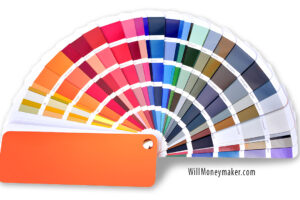There’s been a lot of buzz about the “death of prints” in photography. But frankly? Prints aren’t going anywhere. They may become less popular over time as digital technology continues to proliferate, but there will always be a demand for prints.
Why is that? Well, some people argue that prints are the only way to preserve photographs forever—though I would argue that the exact opposite is true. That’s because prints degrade with time. No matter what papers, printing methods and archival techniques you choose, there will come a day when your ancient print just isn’t salvageable anymore.
Digital image files, I would say, will always be around so long as we take care to back them up in multiple places. Particularly images that we make public. Perhaps all of our cloud drives will go by the wayside, and private data there will be deleted, but once it’s on Facebook?
For proof of the archival quality of digital information, we have only to look back at so many old, defunct technologies that have come before. Records, cassette tapes, VHS tapes. Almost none of us have record players, VCRs or tape players anymore, and we often find when we do try to use these older pieces of technology, the storage medium has started to degrade. Even so, all those old movies and songs? They’re still around because someone took care to preserve the information using newer technology.
The same thing will happen with PDFs, TIFs, and JPEGs. Once those file formats go by the wayside, someone—probably lots of someones, given how ubiquitous these formats are—will be out there finding ways to preserve these old files.
So it’s not the archival properties of prints that will keep them hanging around long into the future. If not that, then what? In my opinion, prints are here to stay simply because it’s still the absolute best way to display photography.
Yes, we can display images on monitors, TVs or in digital picture frames—but there are problems with this. Monitors don’t allow us to see prints in our living rooms each day. Here, they’re confined to our workspaces—when we don’t have windows covering our desktop backgrounds. TVs are too useful for displaying things beyond photographs. Almost no one is using a TV to round-the-clock play digital photography slideshows in our living rooms, not when we can also be using that TV for Netflix, video games and whatever else. Digital picture frames, while nice, still aren’t big enough to display truly huge images.
There’s another problem with all of these digital display options. They all remove our ability to display the image in the exact scale and size it’s meant to be displayed. When we display digitally, we have to work within the size of the display we’ll be using. That means without special cropping specific to the display, the image will scale to the display’s size. Aspect ratios, too, and vertical versus landscape orientation are things to consider. If you hang a digital picture frame horizontally on the wall, then use it to display 8×10 images, vertical images will always be smaller than the horizontal ones.
Papers are another part of prints. Metallics, matte finishes, glossy, different printing processes like gelatin silver—each of these things will give you effects that simply can’t be replicated through a digital display, and each is important in creating a final product that looks exactly how you want it to.
So no, I don’t think prints are going anywhere. Yes, it is easier to quickly display and view vast amounts of images digitally. But when it comes to displaying art, technology just isn’t advanced enough to top the print.





